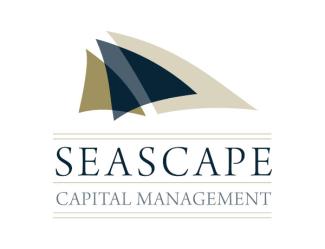
Seascape's Investment Process
by Laurie Barrett on Mar 24, 2022
Over the last several weeks, a few clients have called and asked if we were considering changes in their portfolios as a result of the recent volatility and geopolitical landscape. One brought up that, being new to the firm, he hadn’t endured a market shock like this so it might be comforting to know why we were confident in our process in the first place. We thought it was a very apt comment so took the inspiration and ran with it. Below we offer a brief overview of our investment process. We hope you find it helpful.
At its core, our investment philosophy balances both diversification and concentration, focusing on active management. We invest in a wide variety of asset classes across portfolios, including US and international equities, corporate bonds, government bonds, and high yield bonds. It is vitally important to have many asset classes in a well-diversified portfolio. Most of the volatility and returns a portfolio experiences can be traced back to asset allocation. Diversification helps “smooth out” the returns and volatility over time.
However, within those asset classes, investments are concentrated. We believe in letting our best ideas meaningfully contribute to portfolios rather than over-diversifying away potential returns. For example, our equity holdings, typically forty-five companies, are more concentrated than the average fund. Adding more companies would simply result in performance that mirrors an index.
Asset Allocation
Portfolio construction begins with asset allocation. We build portfolios targeting graduated levels of risk. We define risk as how much a specific asset allocation mix might drop in a typical bear market. We utilize a process called mean-variance optimization to determine the asset allocation for each risk level. Mean-variance optimization is the process of weighing risk, measured as variance in returns, against expected returns. In other words, we can look at different levels of risk in exchange for varying levels of reward. We include over 25 asset classes to find the most efficient portfolios across a range of risk levels. Ultimately, we optimize reasonable expectations for portfolio risk and returns over a 10-15-year time frame. To assist us in this process, we use JPMorgan’s Long-Term Capital Market Assumptions (LTCMA) for expected returns and risk for individual asset classes. JPMorgan’s LTCMA draws on the best thinking of their experienced investment professionals worldwide. JPMorgan has been refining and expanding its forecasting process over the past 25 years, and it is a core piece of our strategic asset allocation construction.
As part of our asset allocation, we utilize ETFs and open and closed-end mutual funds for asset classes in which we do not have sufficient expertise or cannot achieve adequate diversification with individual securities. Generally, those asset classes individually comprise a smaller portion of the portfolio, such as high yield bonds, mortgage-backed securities, bank loans, inflation hedges, etc. As an independent registered investment advisory firm, we are not beholden to using a specific fund company’s product. Our goal is to find the “best in breed” managers for each of these smaller allocations.
Equity Selection Process
We believe in active management within a well-defined process. Our equity portfolios generally consist of thirty US equities, fifteen International ADRs, and, at times, Emerging Markets ETFs or mutual funds. To identify our equity selections, we begin with a quantitative screen. We partner with The Applied Finance Group (AFG), which since 1995, has been a leader in valuation and corporate performance. We utilize AFG’s proprietary screens, which are based on a proprietary measure of corporate performance, “Economic Margin,” to evaluate companies from a cash flow factor perspective. AFG’s intrinsic value estimates for companies across the global equity universe are the foundation of our due diligence. AFG’s screen ranks the universe of all stocks from A-graded to F-graded companies. Importantly, stock comparisons are relative to their industry.
AFG’s screen includes multiple other factors that go into the overall company grade. The other two main factors are Quality and Price/Earnings Momentum--which are equal inputs to a company’s overall score. Notably, the factors in the scoring system are intelligent in that they are dynamically weighted depending on which factors the market is rewarding at the time. At its core, this screen helps us find high quality companies with strong cash flows, revenue growth, and earnings growth.
In addition to the quantitative screen, we perform fundamental due diligence on companies that score well before being included in portfolios. Our total equity portfolio is typically sector-neutral to the S&P 500 Index. We believe we can add more value via stock selection vs. sector selection given the rigorous valuation framework we employ.
Volatility
We do manage portfolios proactively and make constant changes around the edges as macroeconomic conditions warrant. For example, we added inflation hedges to the fixed income allocation last year when we identified a longer term trend in interest rates and inflation. However, with our disciplined equity selection and portfolio construction processes, we have confidence to refrain from emotional reactions to severe market movements. While volatile markets often see extreme program trading, quick rotation between sectors, and intraday trading that have nothing to do with a company’s longer term value, they do create real price movement. Sticking with a process that cuts through that noise and enables us to manage past it makes all the difference. It’s not ever easy to see portfolio values swoon and even more gutwrenching to buy when it looks like the dust has settled. As unoriginal as this sounds though, time in the market is ultimately what matters and trying to time the market rarely works.
We hope this brief overview sheds some light on how your portfolios are managed. As always, please call if you would like to discuss your portfolio in more detail.
